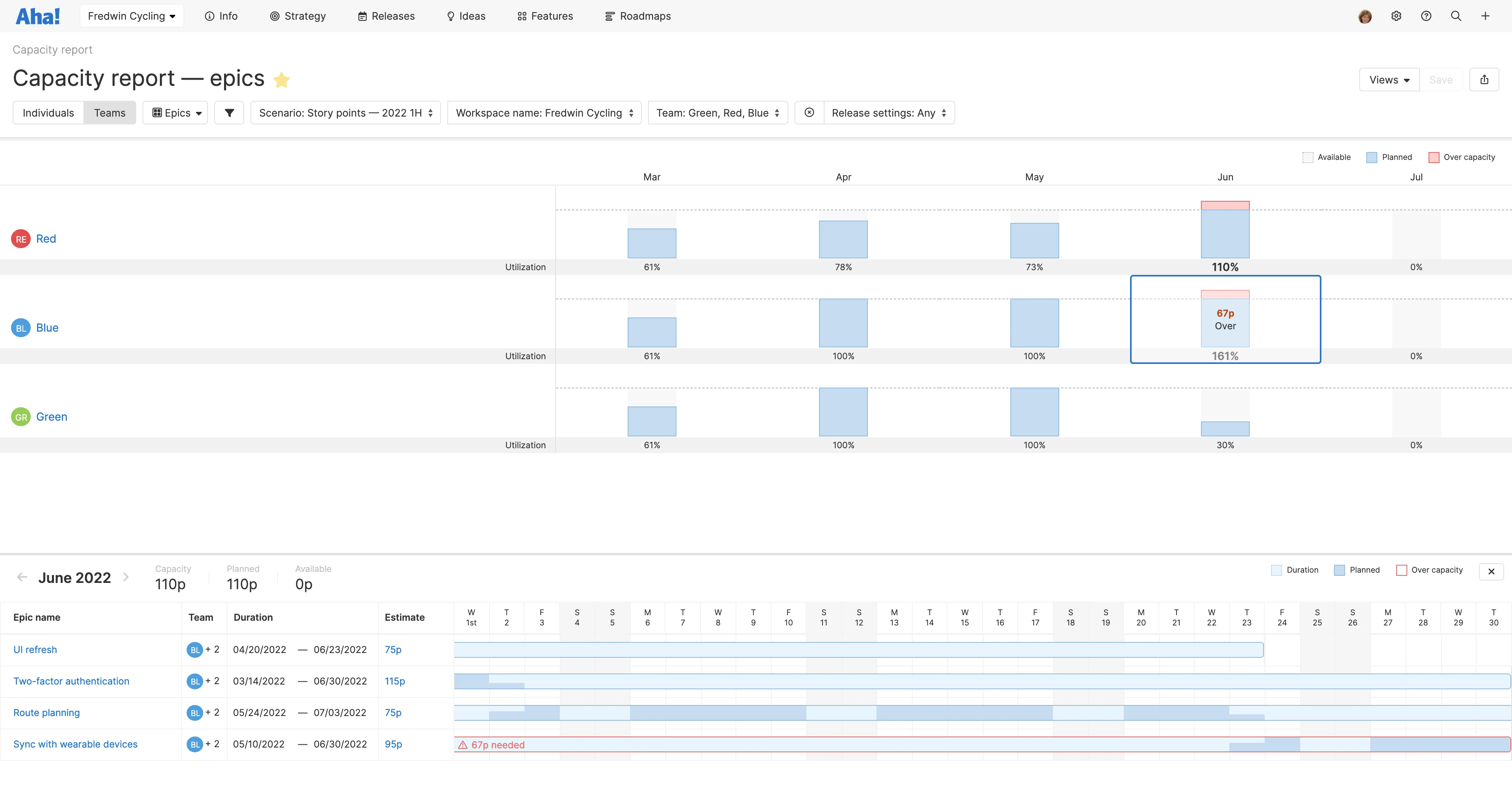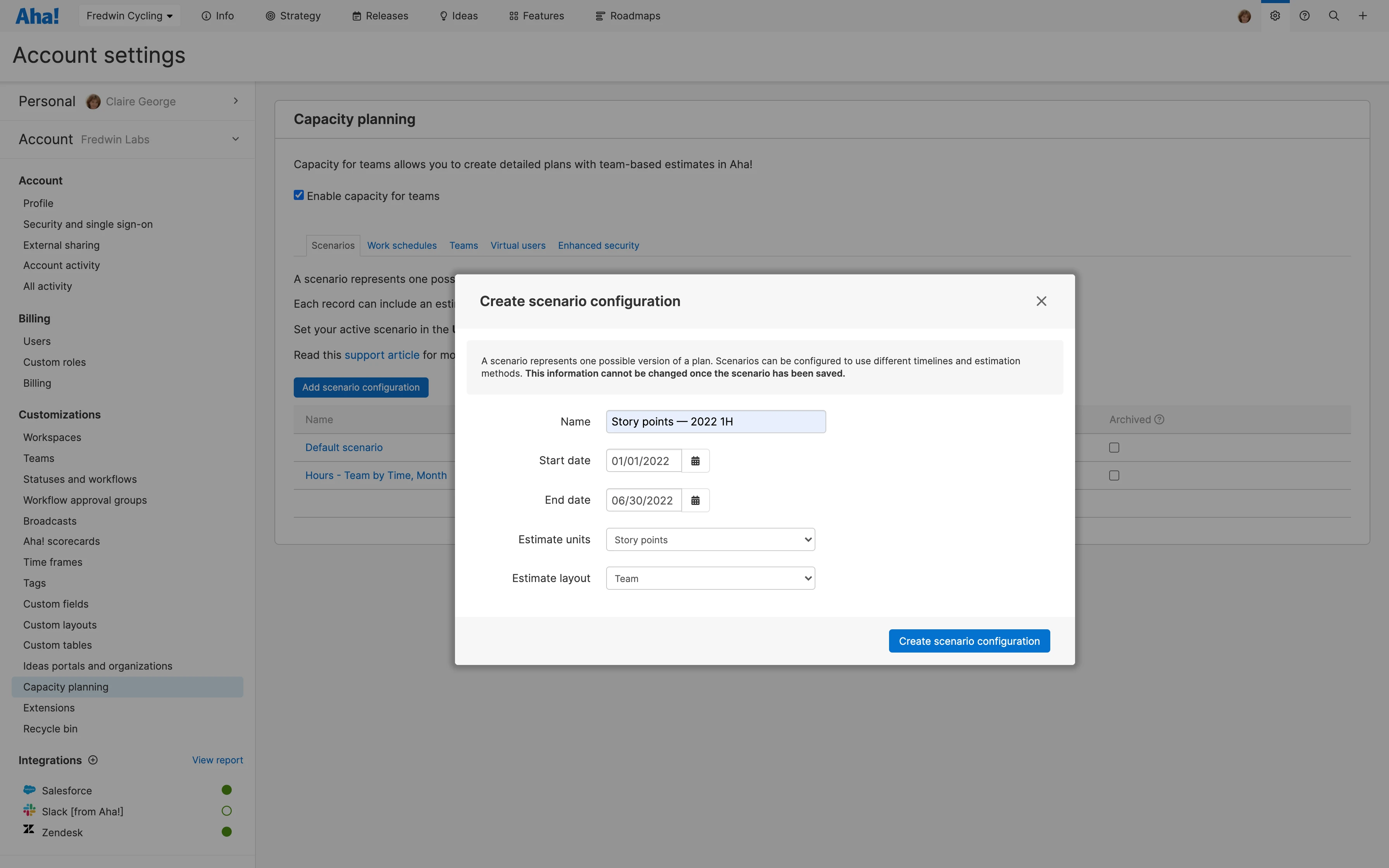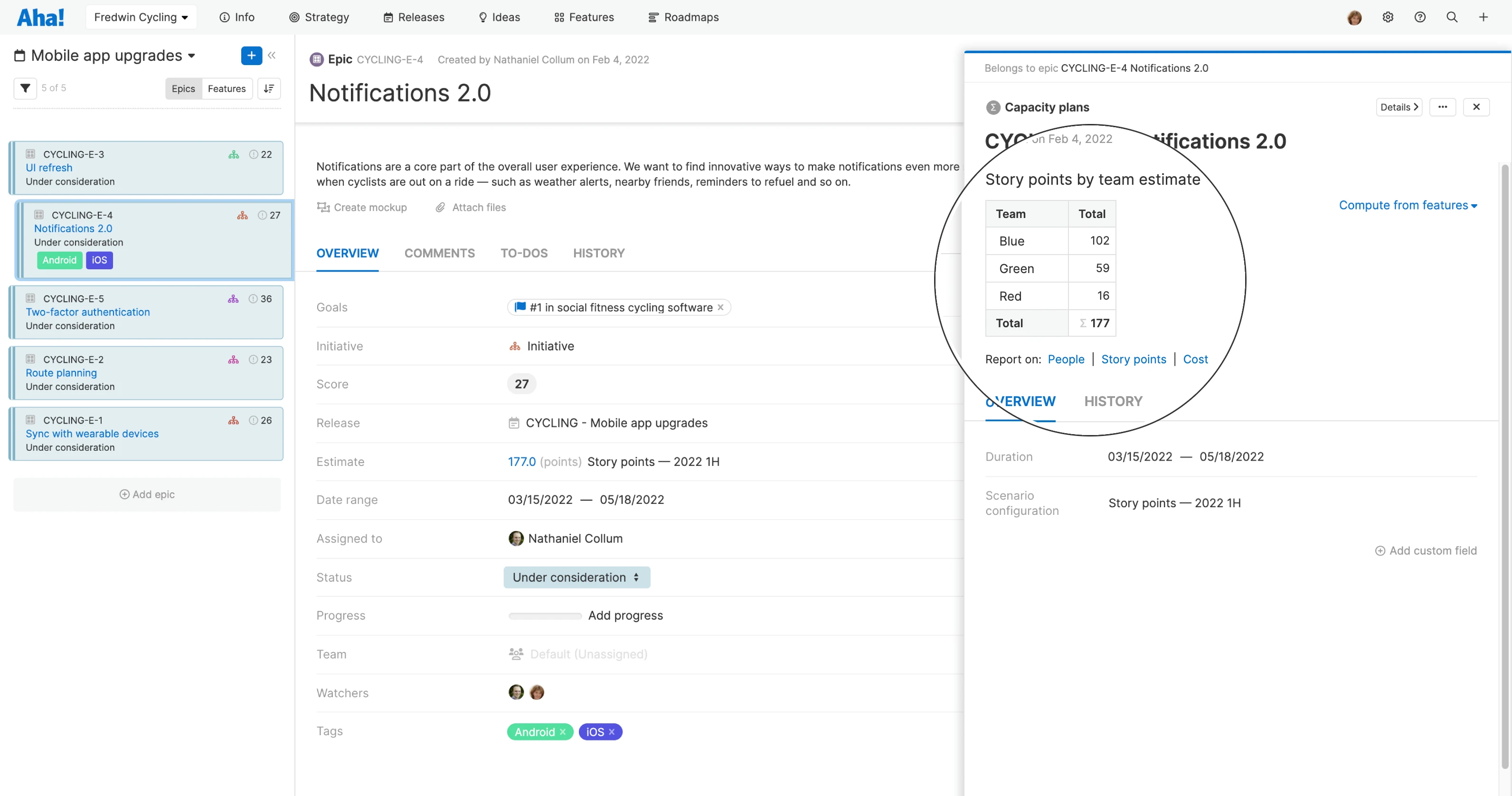
Visualize capacity across multiple teams in story points in Aha! Roadmaps.
Plan Work Capacity for Teams in Story Points
Every product team handles capacity planning differently. Your approach will vary based on a number of factors — such as the timeline for achieving your roadmap, team structure, and product development methodology. What matters is that you gather the inputs needed to assess the feasibility of your plan and chart a realistic course to get there.
You now have the option to plan capacity for teams in story points in Aha! Roadmaps — so you can use the estimation unit that makes the most sense for you.
Aha! Roadmaps provides powerful capacity planning functionality to help you effectively allocate and schedule work across teams. You can create scenarios using different timelines and estimation units to match your strategic planning process and then visualize the workload across teams on the capacity report.
You could always create team-based estimates in people, hours, or cost. Now you have the option to estimate work, set team velocity, and visualize capacity in points too. This makes it possible for agile teams to use the same estimation unit for both planning and building new functionality.
Capacity planning for teams is especially beneficial for large organizations with many strategic workstreams. That is why we included it in the Aha! Roadmaps Enterprise+ plan. It is for organizations that demand the most sophisticated capabilities and a hands-on level of support from our concierge team. The plan also includes advanced security and backup features, as well as ongoing training services.
Here is a closer look at how to analyze capacity in points:
Create a points-based scenario
Let's imagine you are planning epics or high-level themes of delivery to help achieve your strategic initiatives. Configure a scenario and select points as your estimation unit. In the example below, we want to capture the total points needed — but you can also estimate effort by day, week, month, quarter, or year. Then create a work schedule (or update an existing one) and set the velocity based on the number of points a team can complete in a day.
Estimate the work
Now let's capture the overall effort required to deliver each epic. Below, we are using the scenario that we created in the previous step. We auto-calculated the number of points based on advanced estimates already captured on our supporting features. This gives us a clear picture of the resources needed from each team.
Assess team capacity
Identify potential scheduling issues. The capacity report makes it easy to visualize the workload of each team by month. In this example, you can see that the blue team is over capacity by 67 points in June. We select the monthly column to see which epics are scheduled for the team to work on. Moving out the "Sync with wearable devices" epic to July solves our capacity issue.
Set realistic delivery plans based on an accurate understanding of the team's velocity, availability, and the effort needed to deliver the work.
Our goal is to help you effectively balance the team's workload with the timing of your strategic plans. When you know exactly what you can commit to, you can make meaningful progress towards your big objectives.
Upgrade to the Aha! Roadmaps Enterprise+ plan
Aha! Roadmaps is the best way to set strategy, prioritize features, and share visual plans. Choose the Enterprise+ plan if you need the most sophisticated capabilities, advanced levels of support, security and backup features, as well as ongoing consulting services. Use Aha! Roadmaps with Aha! Develop to create a unified product development environment. Please contact us if you would like to learn more.






